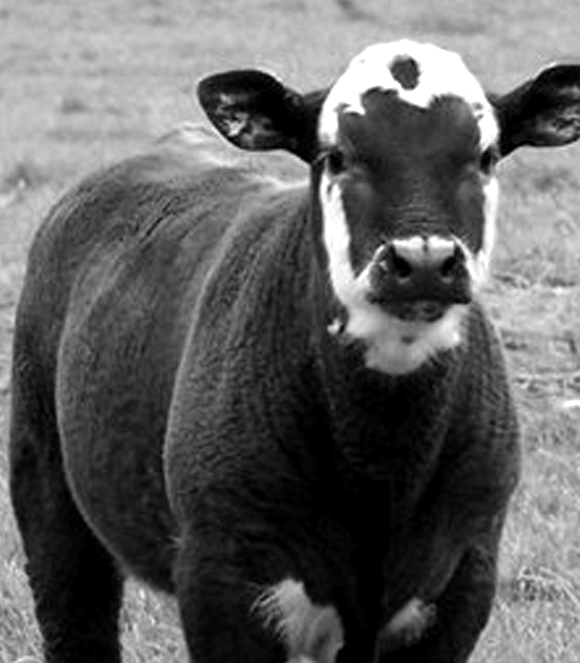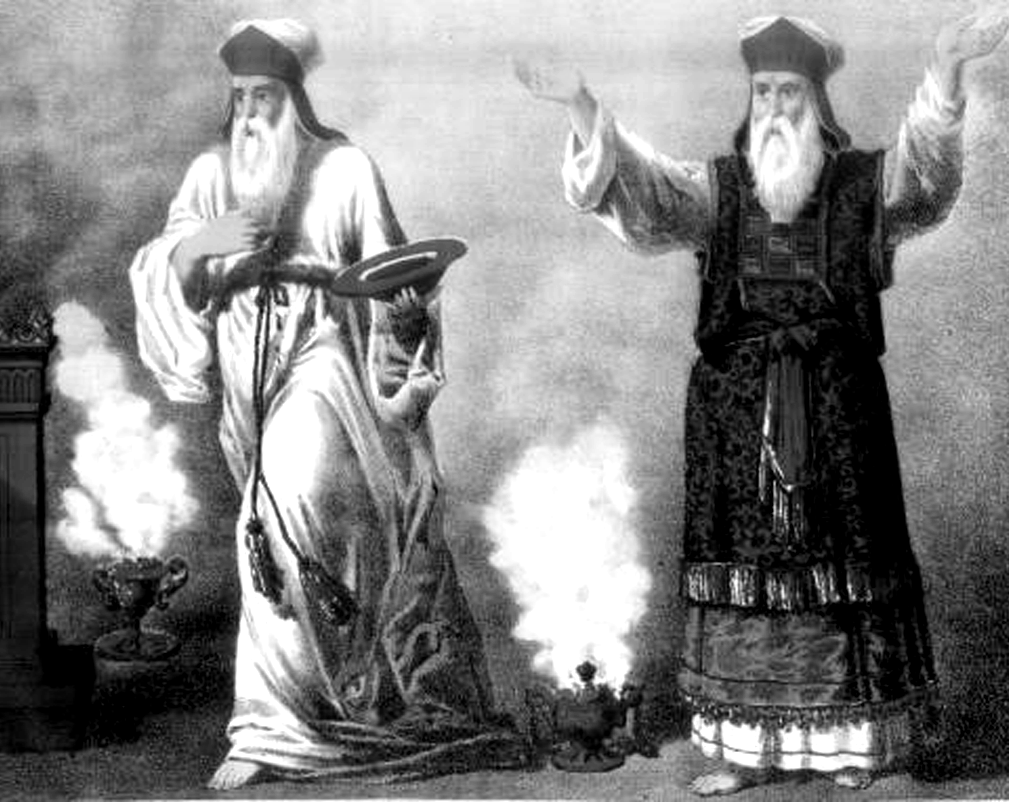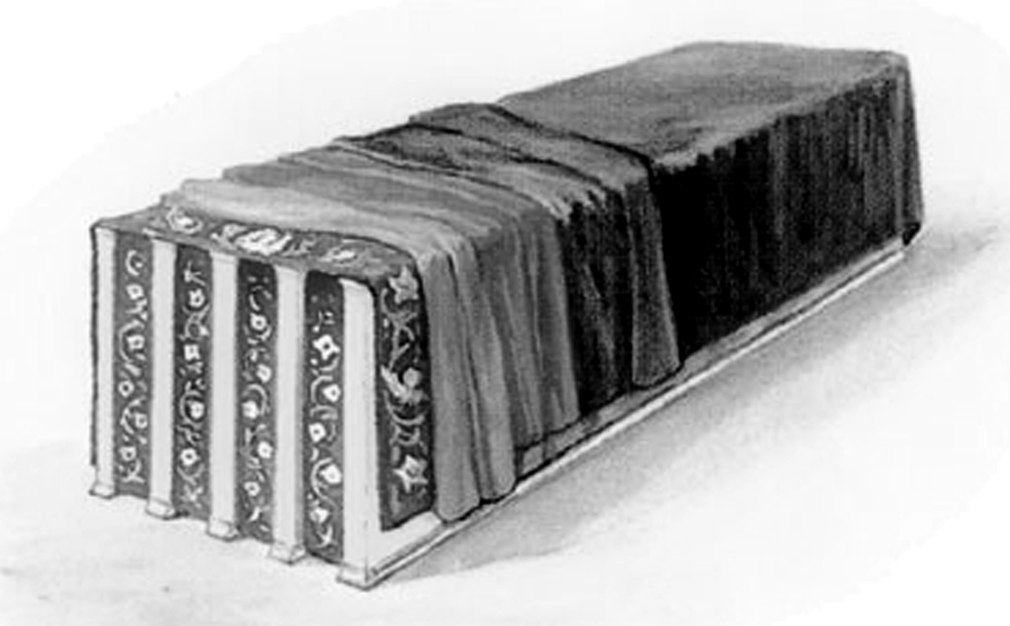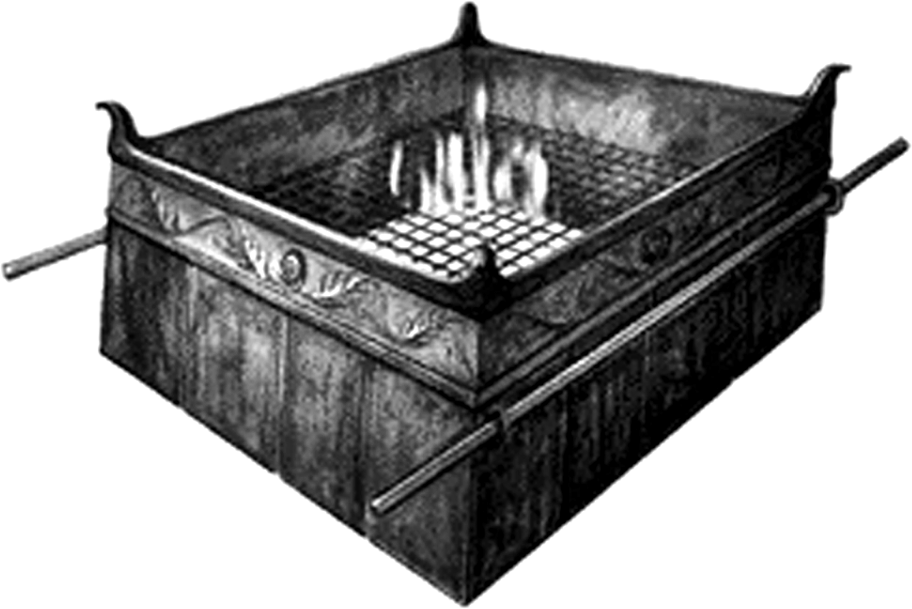Two Views of Atonement
“And this shall be a statute forever unto you; in the 10th day of the 7th month … to make an atonement for the children of Israel for all their sins once a year” (Leviticus 16:29,34).
The Hebrew word rendered “atonement” means “to cover.” Strong says it appears in various forms including the words cleanse, disannul, forgive, be merciful, pardon, purge, reconcile.
It is wonderful to see what a grand arrangement the Israelites received from God compared to the superstitious Egyptians. He gave them a beautiful place of worship, a priesthood to carry out the duties of worship, and a law or code of conduct that raised them morally and physically above their heathen neighbors. What they might not have known is that with the receiving of the law, they also became aware of how easy it was to disobey it and come under the influence of sin: “Therefore by the deeds of the law there shall no flesh be justified in his sight, for by the law is the knowledge of sin” (Romans 3:20).
As individual Israelites realized their need for forgiveness when they sinned, they were to bring a sacrifice to the tabernacle according to the rule and regulations of the law. But on the 10th day of the 7th month, there was a great national time of atonement when the nation was made right with God. This was such a serious matter that this was the only annual day of fasting according to the law. “It shall be a sabbath of rest unto you, and ye shall afflict [Hebrew, fast] your souls by a statute forever” (Leviticus 16:31). “Wherefore have we fasted, say they, and thou seest not? wherefore have we afflicted our soul, and thou takest no knowledge? Is it such a fast that I have chosen? a day for a man to afflict his soul?” (Isaiah 58:3,5).
How long did it take to construct the Tabernacle and establish this mode of worship? Less than a year! When the Israelites left Egypt, they were told: “This month shall be unto you the beginning of months” (Exodus 12:2).
It was the third month that Moses went up into Mount Sinai to talk with God, to receive the law, and the instructions for the building of the Tabernacle. And by the end of that first year, the construction was complete. “And it came to pass in the first month in the second year, on the first day of the month that the tabernacle was reared up” (Exodus 40:17).
LEVITICUS 8
Without a priesthood to minister in the service of the tabernacle, it would not benefit the people. So in the 8th chapter of Leviticus we read about the ceremonies associated with inducting Aaron and his sons into the priesthood. It took one full week. “And ye shall not go out of the door of the tabernacle of the congregation in seven days until the days of your consecration be at an end: for seven days shall he consecrate you” (Leviticus 8:33).
Naturally, there had not yet been any “‘day of atonement,” for there had been no completed tabernacle and no official priesthood. So it was necessary to purge the nation from sin (typically, of course) as the very first duty of the priests. “And Moses said unto Aaron, Go unto the altar and … make an atonement for thyself and for the people … as the Lord commanded” (Leviticus 9:7).
The service of atonement recorded in this 9th chapter of Leviticus occurred on the 8th day of Nisan, the first month of the year. It was never repeated again since by the 10th day of the 7th month the annual day of atonement arrangement applied for the typical purging of sin.

A Bullock for a Sin Offering
Both the ceremonies in the 9th chapter of Leviticus and the 16th chapter were for the express purpose of making atonement for the nation of Israel. We would ordinarily expect that the ceremonies would be identical. But in fact they were quite different. Why should this be? We suggest that it is because the atonement work is being described from two quite different viewpoints.
ATONEMENT CEREMONIES
There is no question that this entire arrangement was meant to teach us important lessons. It was not just an empty annual ceremony. It was to show us what was important in God’s sight.
“For every high priest taken from among men is ordained for men in things pertaining to God, that he may offer both gifts and sacrifices for sins. And no man taketh this honour unto himself, but he that is called of God, as was Aaron. So also Christ glorified not himself to be made an high priest” (Hebrews 5:1,4, 5).
So we see that Christ is the reality of the high priest in the atonement sacrifices. And the underpriests, Aaron’s sons, picture those who walk in the footsteps of Jesus, the church. The time of sacrifice is the Gospel Age, to be followed by a time of blessing in the Millennial Age. So we must recognize that the Day of Atonement really pictures what has been happening since the time of Christ. The next age is pictured in all the other days of the year.
WHERE DID THE CEREMONIES TAKE PLACE?
In both the 9th and 16th chapters, the animals were killed in the court and parts of the animals were burned on the brazen altar. In both cases parts of the animals were burned outside the camp. But in the 9th chapter there is nothing that takes place in the holy or most holy, the tabernacle proper. (Exception: at the very end of all the sacrificing, we read, “And Moses and Aaron went into the tabernacle of the congregation and came out and blessed the people” (Leviticus 9:23).

Activities on the Day of Atonement
WHO DOES THE SACRIFICING?
The 9th chapter opens with Moses summoning Aaron, his sons, and the elders of Israel As the chapter goes along we see that the sons have a part in the ceremonies. “And the sons of Aaron brought the blood unto him” (Leviticus 9:9).
In the 16th chapter there is only Aaron. Moses has no part, the sons are not mentioned, and there are no “elders” of Israel. There is incidental mention of someone to handle the scapegoat and the burning of hide, hoofs, and dung outside the camp.
WHAT TYPES OF SACRIFICES ARE MADE?
Both the 9th and 16th chapters require a sin offering and burnt offering for “Aaron and his house,” and a sin offering and burnt offering for “the people.” The animals for these four offerings were the same for both sin offerings and for the burnt offering for Aaron and his house. But in Leviticus 9 there is a bullock offered in addition to the Leviticus 16 ram as a burnt offering for the people.
We notice that Leviticus 9 talks about three offerings never mentioned in Leviticus 16.
Leviticus 9:17 – “And he brought the meal offering and took an handful thereof and burnt it upon the altar.”
Leviticus 9:18 – “He slew also the bullock and the ram for a sacrifice of peace offerings which was for the people.”
Leviticus 9:21 – “And the breasts and the right shoulder Aaron waved for a wave offering before the Lord.”
WHAT HAPPENED TO THE BLOOD?
“Aaron therefore went unto the altar and slew the calf of the sin offering which was for himself. And the sons of Aaron brought the blood unto him and he dipped his finger in the blood and put it upon the horns of the altar and poured out the blood at the bottom of the altar” (Leviticus 9:8, 9). Clearly, it was the brazen altar that received the blood of the sacrificed sin offering. But that is not what happens when we get to the 16th chapter:
“And he shall take of the blood of the bullock and sprinkle it with his finger upon the mercy seat eastward and before the mercy seat shall he sprinkle of the blood with his finger seven times” (Leviticus 16:14). This bringing in of the blood into the most holy is an important part of the symbolism of the atonement sacrifice. The blood was also sprinkled on the incense altar:
“And he shall go out unto the altar that is before the LORD and make an atonement for it; and shall take of the blood of the bullock and of the blood of the goat and put it upon the horns of the altar round about. And he shall sprinkle of the blood upon it with his finger seven times and cleanse it and hallow it from the uncleanness of the children of Israel” (Leviticus 16:18,19).
Now it might seem that this is the brazen altar, but it is not. When the incense altar was constructed, instructions were given to hallow it once a year with the blood of sin offering. “And Aaron shall make an atonement upon the horns of [the incense altar] once in a year with the blood of the sin offering of atonements; once in the year shall he make atonement upon it throughout your generations: it is most holy unto the Lord” (Exodus 30:10).
PEOPLE’S SIN OFFERING
In the 9th chapter of Leviticus Aaron received one goat for a sin offering for the people. In the 16th chapter he received two goats. However, only a single goat was killed and sacrificed in both chapters. The second goat in chapter 16 is called the scapegoat and after having had the sins of the people confessed over it, it was led out into the wilderness and it was not heard from again.
BLESSING OF THE PEOPLE
Two blessings are recorded in chapter 9. No blessing is recorded in chapter 16. “And Aaron lifted up his hand toward the people and blessed them and came down from offering of the sin offering and the burnt offering, and peace offerings. And Moses and Aaron went into the tabernacle of the congregation and came out and blessed the people: and the glory of the LORD appeared unto all the people” (Leviticus 9:22,23).
Sacrifice for atonement occurs during the Gospel Age. The world receives a kind of blessing from Jesus and the church class. But the real blessing comes after the “head and body” go into the tabernacle and then return to bless the people. The “glory of the Lord” – probably lightning – then came out of the protecting cloud and consumed the burnt offering (verse 24).
WHY THE DIFFERENCE?
These are the major differences. Perhaps you can find more. We must therefore ask, Why should these differences exist? Let us suggest that there are two viewpoints of the sacrifices which occur during this Gospel Age: (1) Our viewpoint in chapter 9, from the standpoint of the flesh. (2) God’s viewpoint as described in chapter 16.
WHERE DID THE CEREMONIES TAKE PLACE?
We see each other in the court condition and we understand about the stench of the sacrifice “outside the camp.” But the incense altar and mercy seat are something that only God appreciates. So the 16th chapter shows us how the value of the sacrifice in the court is brought into the very presence of God in the Most Holy with incense. Instead of a bloody thing, it is a sacrifice of sweet savour to Him.
WHO DOES THE SACRIFICING?
In the 16th chapter only Aaron is mentioned. God sees only Christ as the high priest and the church as this high priest’s body members. But we see Jesus as our high priest and elder brother and ourselves as under priests – chapter 9. The “elders” only briefly mentioned at the start of chapter 9 might well picture the ancient worthies whose faith- fulness we recognize as though they were sacrificing right with us:
“For by [faith] the elders obtained a good report. Wherefore seeing we also are compassed about with so great a cloud of witnesses” (Hebrews 11:2, 12:1).
WHAT TYPES OF SACRIFICES?
The sin offering was required to effect the atonement. The burnt offering showed God’s acceptance of the sin offering.
But in Leviticus 9 we have the meal, peace, and wave offering. These three offerings all show our consecration from three perspectives. From Leviticus 9’s perspectives, we see
Meal – The high priest “‘took a handful and burnt it on the altar” (Leviticus 9:17). Verse 4 says it was “mingled with oil.” Notice that no measure was specified. Each person gave what was appropriate for him – a handful. The Companion Bible says the meal offering was a present, or gift offering. The oil would represent the holy Spirit mingled among the kernels of ground wheat which we willingly sacrifice on the altar.
Peace – The Companion Bible suggests: “The Hebrew word conveys the idea of peace on the ground of perfection of compensation or recompense. Hence connected with the thought of rendering payment of vows or praises because of peace enjoyed.” Romans 5:1 – “Therefore being justified by faith we have peace with God.” Psalms 66:13 – “I will go into thy house with burnt offerings: I will pay thee my vows.”
Wave – There is no instruction about how long Aaron was to wave the breasts and right shoulder. Clearly, he was to continue doing so until it was taken from him. So we also must continue to “wave” the choicest portion of the peace offering (or consecration vows) until it is removed from us.
God’s viewpoint of our consecration is nicely shown in 16:12 with the words “and his hands full of sweet incense beaten small.” Again there is no measure, simply all we can give. This incense is described with the blood of the bullock representing Jesus. Although it is not repeated with the Lord’s goat, the principle does apply. We give all we can, as Jesus gave all he could.

The Tabernacle, into which the blood was brought in Leviticus 16
WHAT HAPPENED TO THE BLOOD?
We see in Leviticus 9 the blood of sacrifice cleansing the brazen altar, to sanctified it for use. In Leviticus chapter 16, it is the incense altar that is sanctified. And applying of the life of the animal represented in its blood upon the mercy seat in the Most Holy satisfies God’s justice so that atonement is made. But this occurs only from God’s viewpoint.
WHY TWO GOATS?
We do not perceive any difference between those walking in the footstep of Jesus. So we have just one goat as a sin offering for the people in Leviticus 9. But God, who can read the heart, sees that not all who present themselves in sacrifice are truly willing to carry out the terms and conditions of that covenant. So in Leviticus 16 there are two classes: Church and Great Company. One willingly is sacrificed like their Lord and Master; the other is delivered unto Satan for the destruction of the flesh, that the spirit might be saved (1 Corinthians 5:5).
BLESSING OF THE PEOPLE
The first blessing in Leviticus 9 seems to indicate the partial benefit the world receives now. “Ye are the salt of the earth” (Matthew 5:1). But the full blessing will come only after all the sacrificing is complete. Moses with Aaron in Leviticus 9 seems to show the law (pictured by Moses) approves since justice is fully satisfied. This occurs only after Aaron goes into the tabernacle (showing a change from the sacrificing to the glorified condition) and comes out again.
In Leviticus 16:24 we see from God’s sight that after the sacrificing, a change of garments from sacrifice to garments of glory and beauty occurs. Specific blessing of the people in the next age is not a part of the atonement work of the Gospel Age in His sight.
A BEAUTIFUL PICTURE
The majority of mankind may read the 9th and 16th chapter of Leviticus and come away with a very unlovely view. Why did so many animals have to die? Why was it necessary to splash blood on everything? Modern man calls it barbaric and turns away. But that’s not the way it appeared to Paul. Writing in Hebrews he explains the symbolism:
“And almost all things are by the law purged with blood; and without shedding of blood is no remission. It was there- fore necessary that the patterns of things in the heavens should be purified with these; but the heavenly things themselves with better sacrifices than these. For Christ is not entered into the holy places made with hands, which are the figures of the true; but into heaven itself now to appear in the presence of God for us” (Hebrew 9:22-24).
Modern man would love the easy way out. No suffering, no sacrifice, no death. But remission of sins – atonement – comes only by the death of the perfect man Jesus. And as a result he has passed into the real Most Holy, the presence of God, there to supervise the sacrifice of his body members.
Christ is pictured in so many different places in the Tabernacle. But that does not mean he is in everything. We are there too:
“For the bodies of those beasts whose blood is brought into the sanctuary by the high priest for sin are burned without the camp. Wherefore Jesus also, that he might sanctify the people with his own blood, suffered without the gate. Let us go forth therefore without the camp, bearing his reproach” (Hebrews 13:11-13).
And which beasts had their blood brought into the sanctuary? “Then shall he kill the goat of the sin offering that is for the people and bring his blood within the veil and do with that blood as he did with the blood of the bullock” (Leviticus 16:15).
The bullock represents our Lord. If he did not lay down his life in sacrifice, there would never have been a goat to be sacrificed. But his sacrifice has occurred and Paul tells us to obey the picture and willingly accept the ignominy of the way the sacrifice appeared to the “world” outside the camp. It was a stench as these others gazed on the sacrifice. That was the way they saw it with our Lord and that is the way they see it with us.
The result of the sacrificing will be blessing. Hebrews speaks about Jesus being the mediator of a new and better covenant: “But now hath he obtained a more excellent ministry, by how much also he is the mediator of a better covenant which was established upon better promises” (Hebrews 8:6).
We do not really have uncertainty respecting what this new covenant is, when it applies, or how it will benefit those who come in under it. “For this is the covenant that I will make with the house of Israel after those days, saith the Lord; I will put my laws into their mind and write them in their hearts: and I will be to them a God, and they shall be to me a people. And they shall not teach every man his neighbour and every man his brother saying, Know the Lord: for all shall know me from the least to the greatest. For I will be merciful to their unrighteousness and their sins and their iniquities will I remember no more” (Hebrews 8:10-12).

The Altar in the Court
Are God’s laws now being put into the minds of the house of Israel? Is it true that now all know God from the least unto the greatest? Of course not! Blindness still applies to the house of Israel. “I want you to understand this mystery, brethren: a hardening has come upon part of Israel, until the full number of the Gentiles come in” (Romans 11:25, RSV).
The full number of the Gentiles has not yet come in, but we are nearing the end of this Gospel Age. Soon the time for sacrifice will be at an end and the blessings of the new covenant will begin to flow to Israel and the entire world of mankind as they come into conformity with kingdom arrangements.
Our commission now is to lay down our lives in sacrifice and help our brethren do the same. Phillips has beautifully translated Hebrews 10:19-25 this way:
“So, by virtue of the blood of Jesus, you and I, my brothers, may now have confidence to enter the Holy of Holies by a fresh and living way, which he has opened up for us by himself passing through the curtain, that is, his own human nature.
Further, since we have a great high priest set over the household of God, let us draw near with true hearts and fullest confidence, knowing that our inmost souls have been purified by the sprinkling of his blood just as our bodies are cleansed by the washing of clean water. In this confidence let us hold on to the hope that we profess without the slightest hesitation – for he is utterly dependable – and let us think of one another and how we can encourage each other to love and do good deeds.
Let us not hold aloof from our church meetings, as some do. Let us do all we can to help one another’s faith, and this the more earnestly as we see the final day drawing ever nearer.
– Br. Michael Nekora
